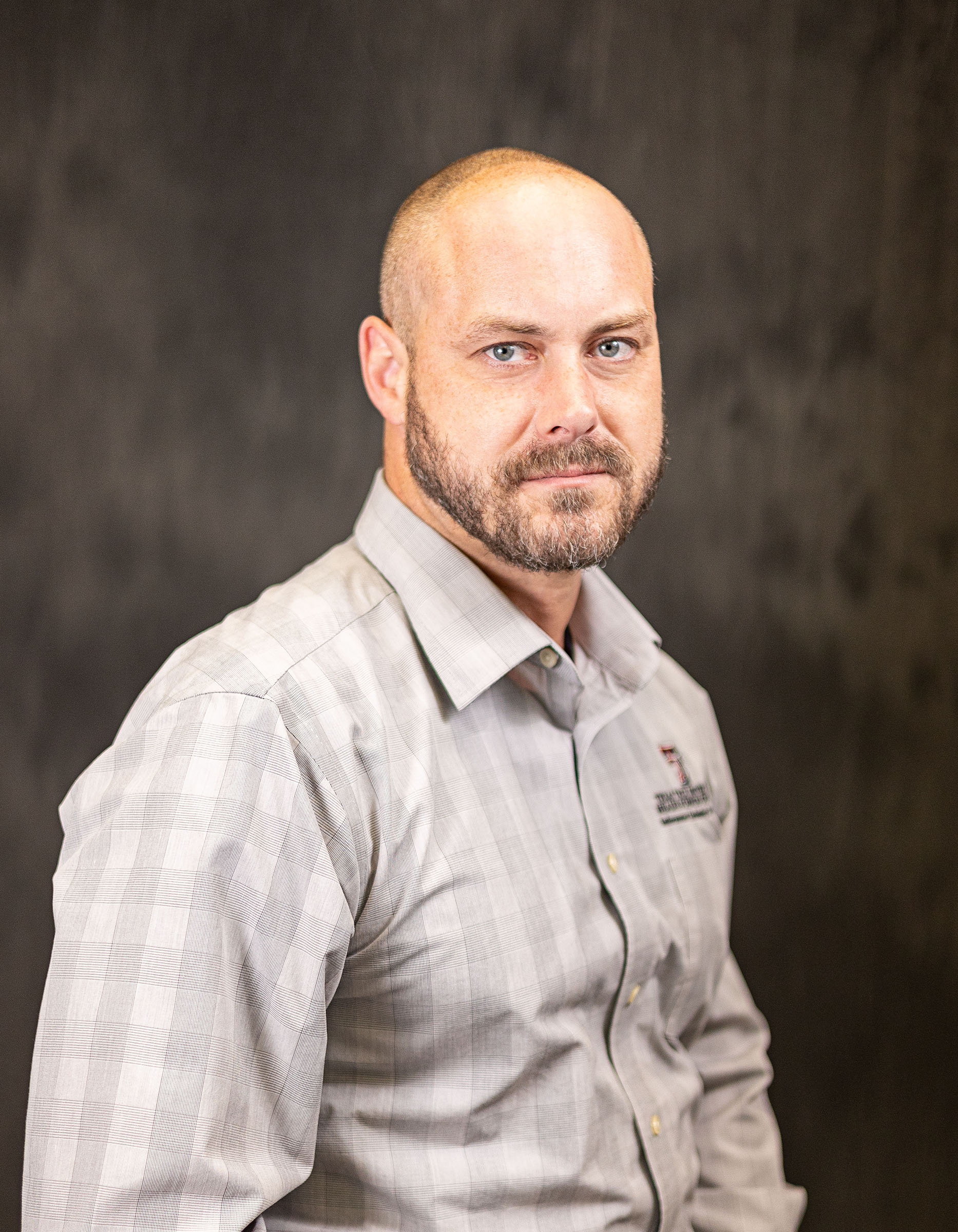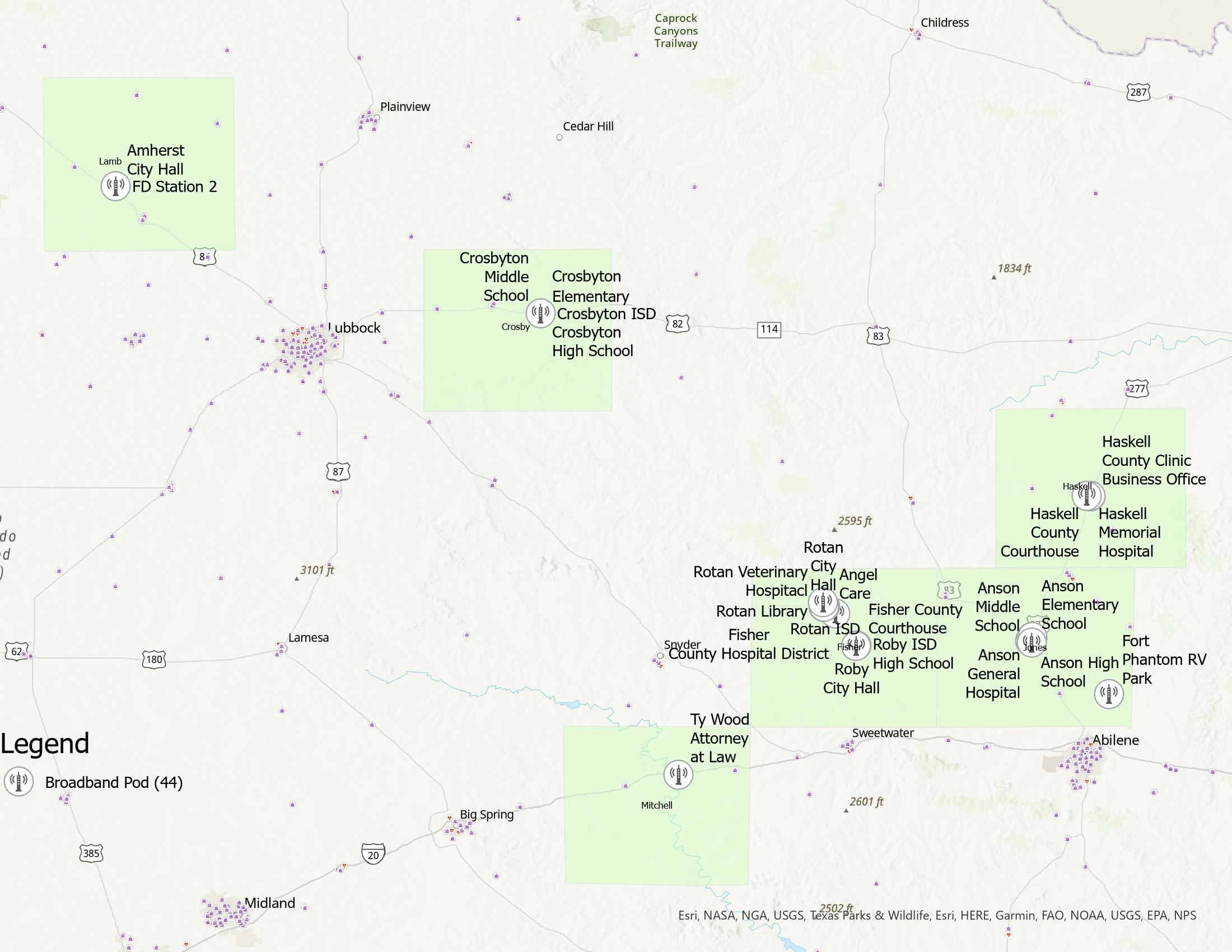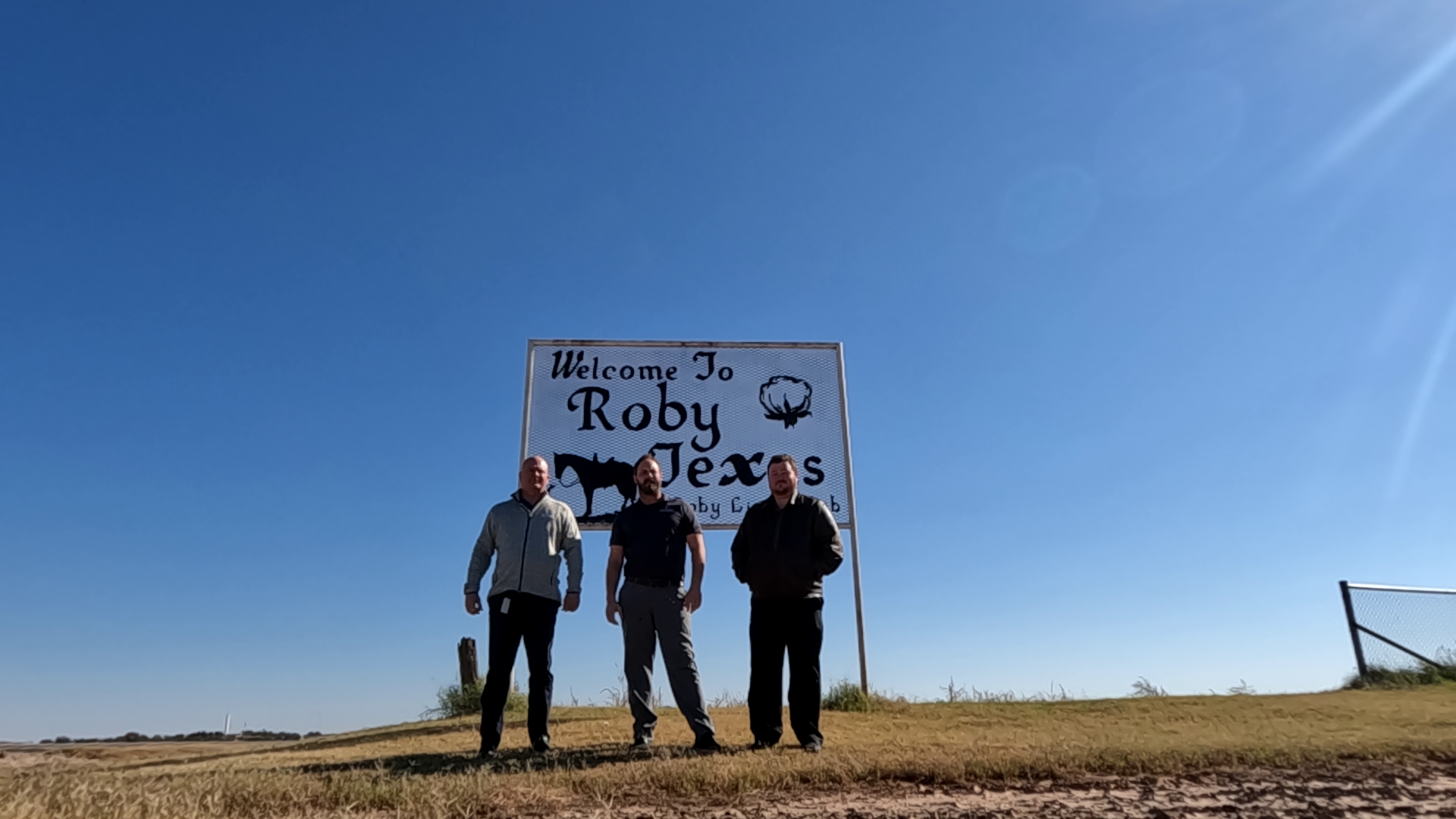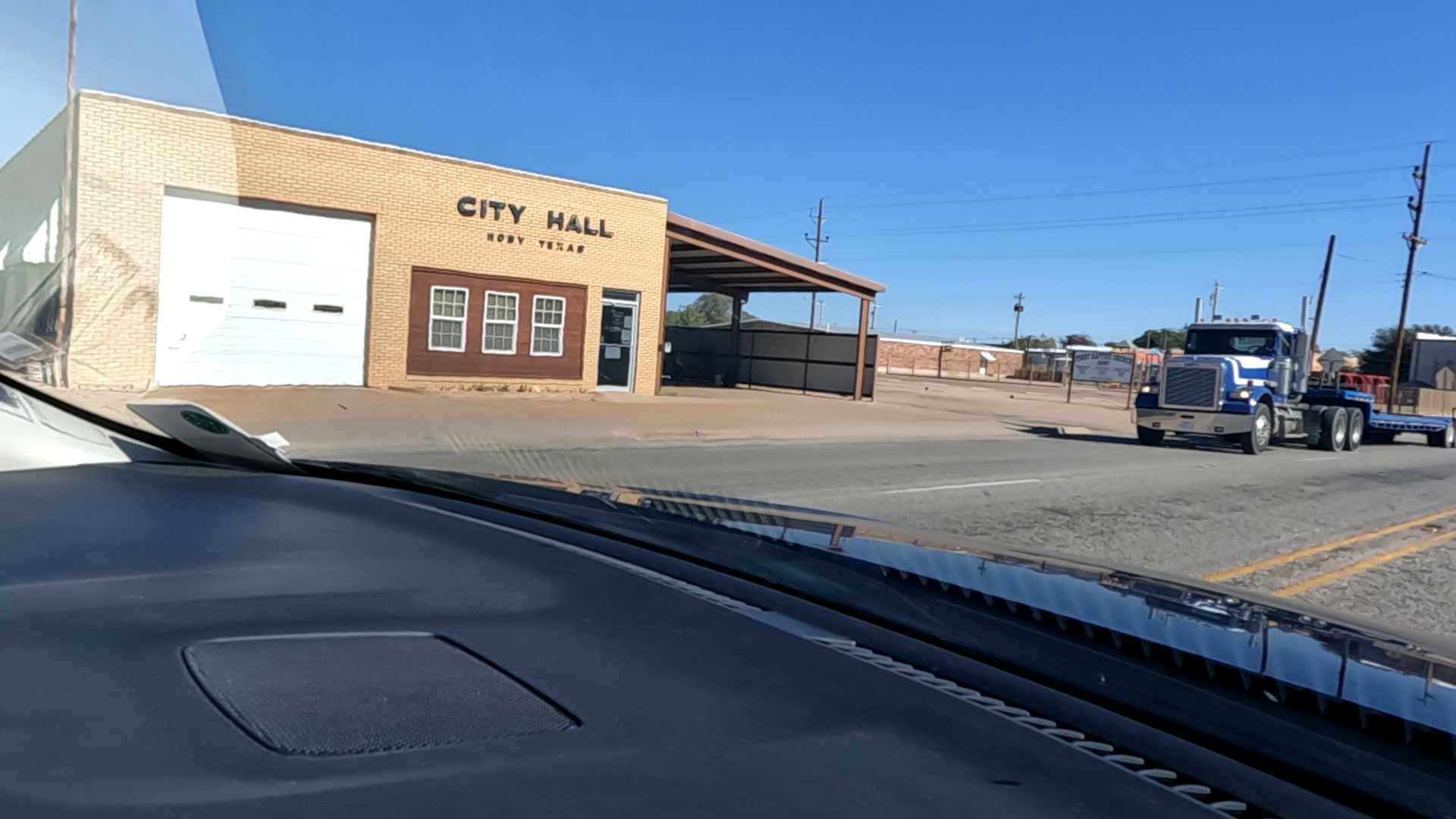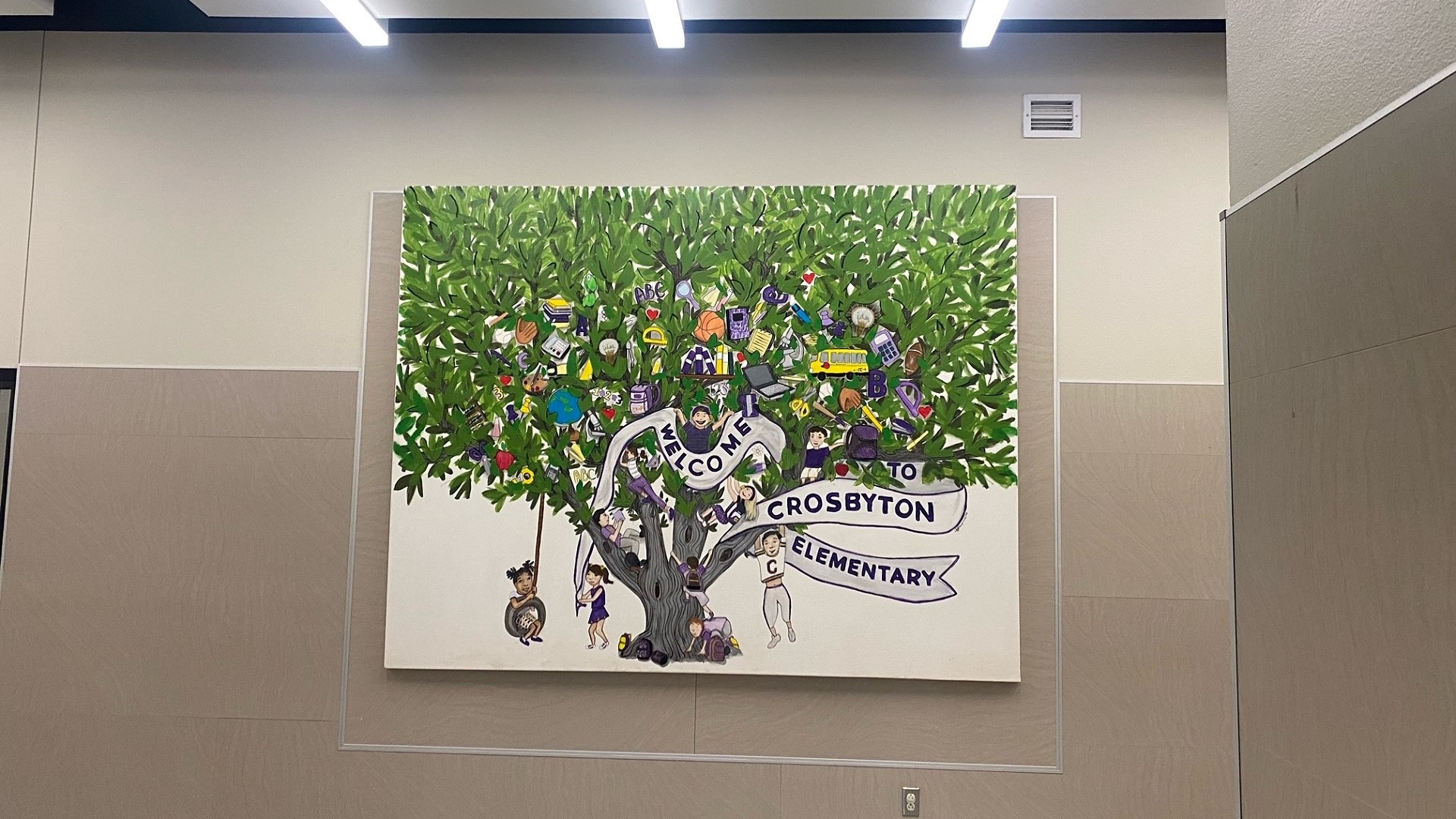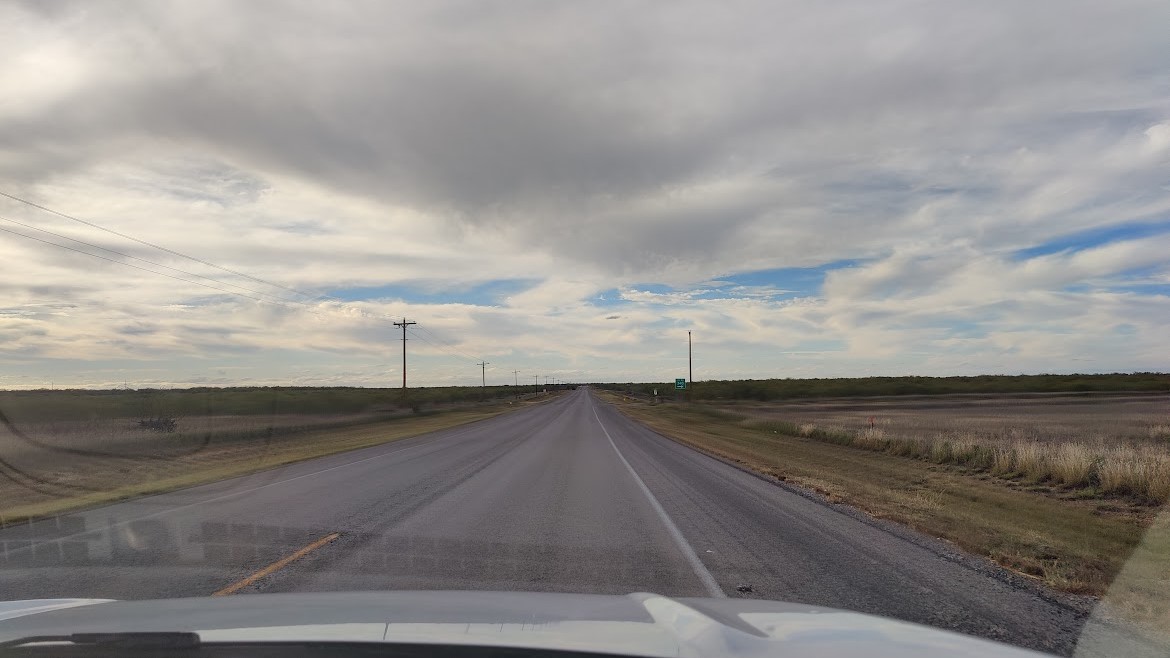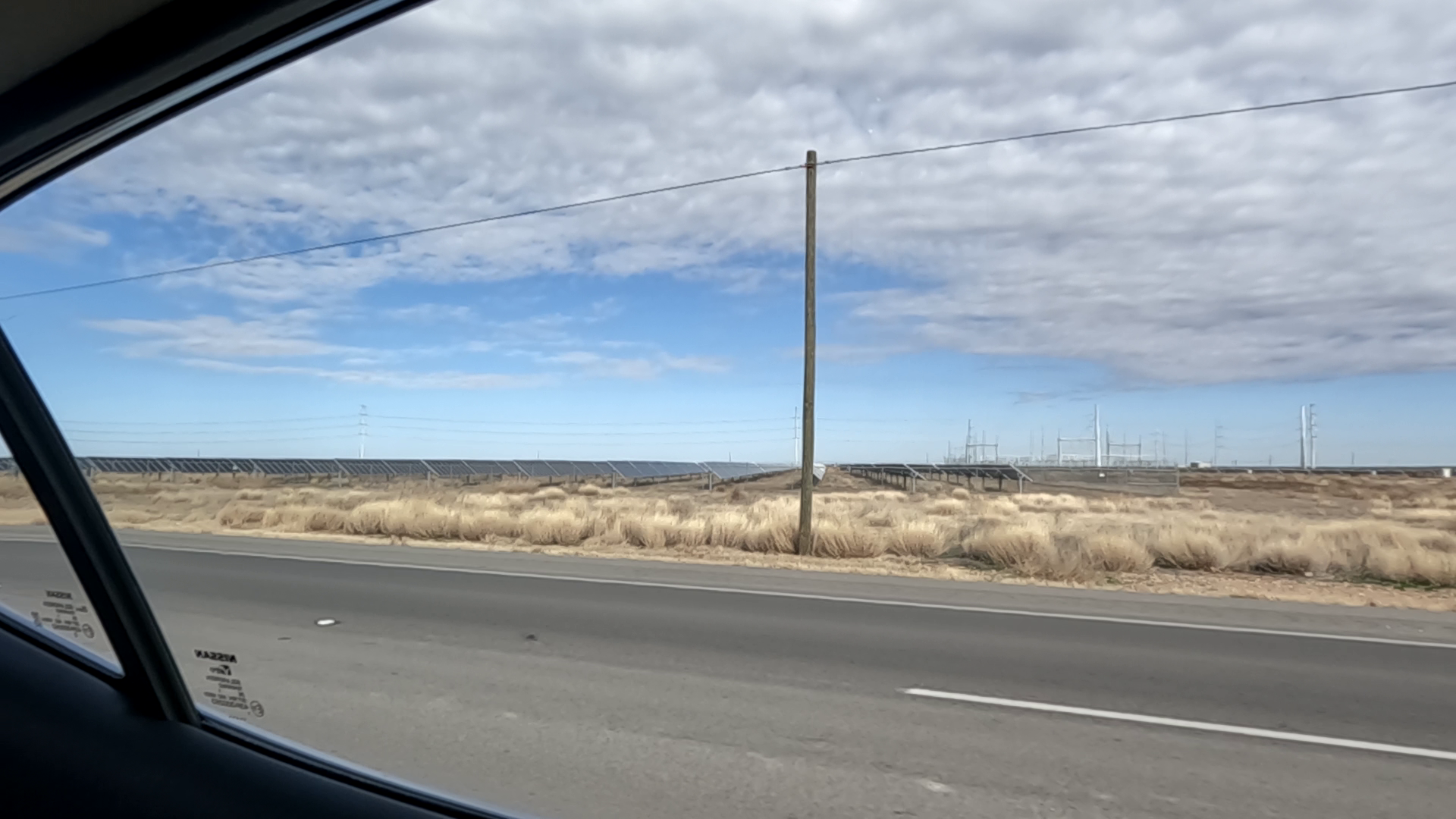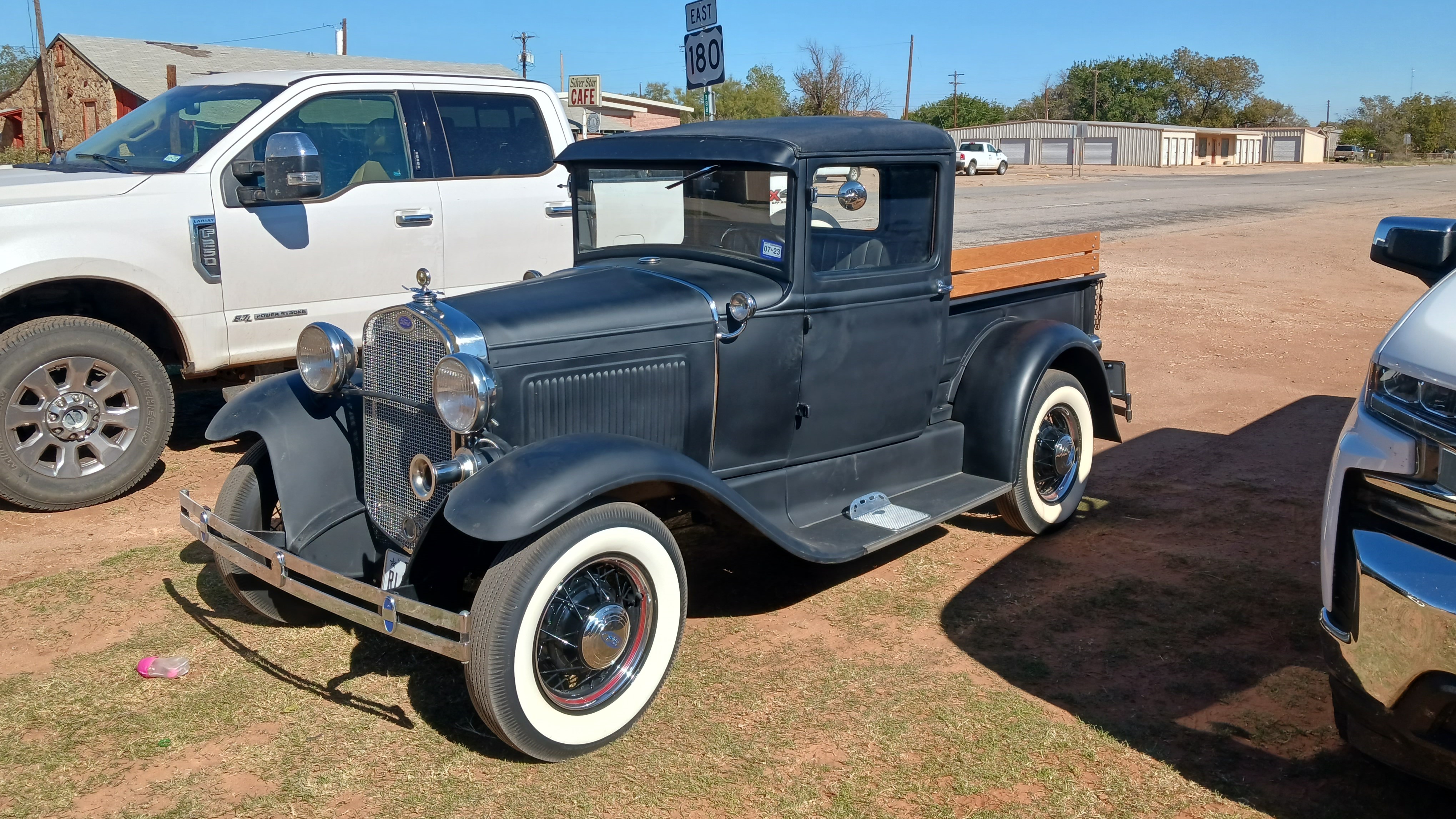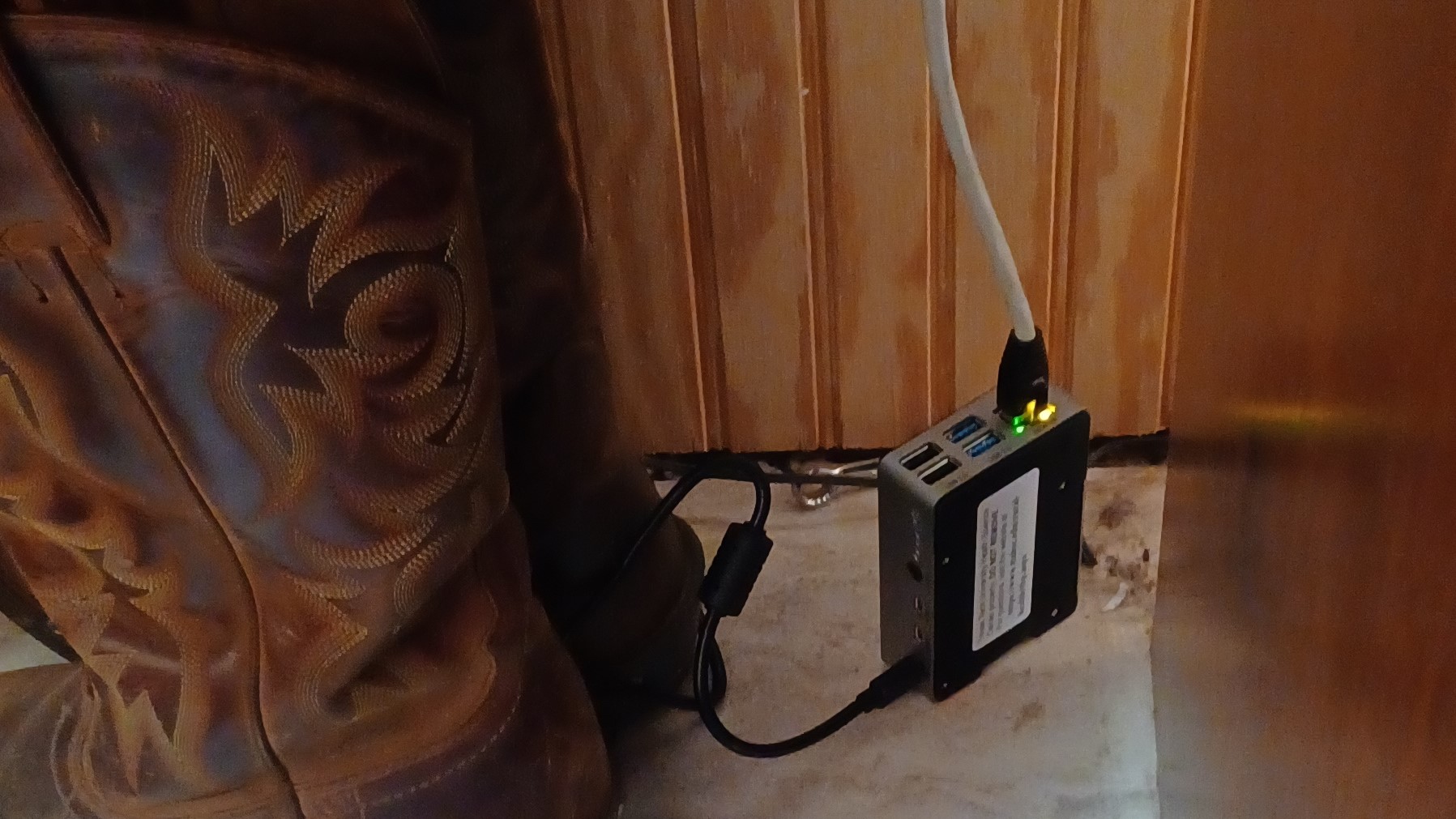Telehealth Broadband Pilot Program
Program Overview:
The Telehealth Broadband Pilot Program is a grant-funded initiative to measure broadband performance and Internet availability in Texas, with an emphasis on evaluating how connectivity affects telemedicine access. The goal of the project is to collect accurate data to support future broadband deployment efforts. Texas Tech Health Sciences Center provides the necessary hardware, software, and training to partnering institutions for no cost to them. The initial phase of the project involves measuring broadband in healthcare facilities and anchor institutions by using a small hardware device that plugs into network connection. These devices run Internet speed tests on a recurring schedule, with a dashboard for viewing test results. Participating in this program will allow you to collect Internet speed data for your facilities, which can help you identify potential problems with your Internet access, degradations in service, and determine if you are receiving the Internet speeds that you are paying for. Data will also be used to help determine if broadband is available in your community, and may help identify areas that need more broadband investment. Later phases of the project will include web- and mobile-based speed tests, and participants will expand to include consumers within each community. We will measure broadband performance and Internet availability in Lamb, Crosby, Mitchell, Fisher, Jones, and Haskell Counties as part of this project.
This project is funded through Health Resources and Services Administration grant number GA5RH40183, awarded to the Alaska Native Tribal Health Consortium. Texas Tech Health Sciences Center is one of three sub-awardees supporting this grant.
How can I participate in this project:
We are looking for partners to participate, if you are a business owner, or affiliated with a Hospital, Clinic, School, Community Center, or other location within our 6-county focus area, contact us here. Contact Us
You can participate by taking and logging your home speed with the speed test below:
If you have a pod register it here: Form
What is the purpose of this survey?
The purpose of this survey study is to learn more about people’s internet access in
the following 6 Texas counties, Lamb, Crosby, Mitchell, Fisher, Jones, and Haskell.
We also want to know how you video stream, browse the internet or have telehealth
visits with your health care provider.
Who is this survey for?
This survey is meant for adults over 18 years of age.
What is telehealth?
Telehealth is when you have a visit with a health care provider using a digital device
like your mobile phone or computer instead of going to the health care provider’s
office or clinic.
Do I have to take this survey?
No, you do not have to take this survey. Your answers will not affect your chances
to sign up for any programs.
How long will the survey take?
The survey will take you about 20 minutes to finish. Once you complete and submit
the survey, your part in the study is over. You will receive a $30 pre-paid Visa gift
card by mail for your participation.
Will my answers be kept private?
Any data collected will not be able to identify you as an individual. We will ask
for your name, birth date, and address in order to send you the $30 pre-paid Visa
gift card. This information will not be connected to your survey responses. Your answers
will be used for research purposes and will stay anonymous and private.
Who do I contact if I have questions?
If you have questions, please contact our team at telehealthresearch@uams.edu or 501-526-7761.
If you have questions about the study conduct you may contact the UAMS Institutional Review Board (IRB) office. Phone: 501-686-5667 or email: irb@uams.edu
Thank you for considering participating in this survey.
Hari Eswaran, Ph.D., Principal Investigator
ESTIMATED TIME TO COMPLETE THIS SURVEY: 10 minutes
It will be helpful to have a copy of your internet bill in participating in this survey.
You will also have the option to run an instant diagnostic test on your internet speed and receive your results at the end of the survey.
Partners:
Fort Phantom RV Park
Amherst City Hall
Amherst Fire Department
Anson Family General Hospital
Anson ISD
Crosbyton ISD
Haskell County Courthouse
Haskell Memorial Hospital
Fisher County Courthouse
Angel Care
Rotan Library
Rotan City Hall
Rotan ISD
Rotan Veterinary Clinic
Ty Wood Attorney at Law, PLLC
A small computer called a “Raspberry Pi” is the primary tool used for measuring broadband speeds in healthcare facilities and anchor institutions within each community. This device runs a secure version of the Linux operating system, and executes proprietary software that manages the Measurement Lab NDT7 and Ookla Speedtest CLI network tests. Details on the tests are provided below.
This device requires power and a wired network connection with outbound access to the Internet. These devices are provided with a unique identifying number, and will need to be configured with address information and latitude and longitude coordinates to provide accurate location information for mapping purposes. Additional information is available in the “Frequently Asked Questions” portion of this document
The two leading Internet speed test applications in the United States are created and managed by Measurement Labs and Ookla, LLC. M-Labs NDT7 and Ookla Speedtest CLI are the two testing platforms used by this project to measure Internet speed. The applications do this by uploading and downloading data and measuring the connection’s speed as well as other network quality information such as jitter, latency, and packet loss. The hardware-based measurement device described above runs these tests to collect broadband speed information.
This project will collect additional data related to each hardware-based measurement device, but will not transmit these details to M-Lab or Ookla. More information on data capture and sharing is available in the “Frequently Asked Questions” portion of this document.
An interactive portal is available to manage the hardware-based measurement devices. This portal gives your organization the ability to view the hardware devices assigned to it, modify location information for each device, and view speed test results. This information is also available to the Community Lead Partner organization for your state and to the grant-funded teams at the Alaska Native Tribal Health Consortium and the University of Arkansas.
As a participating organization, you have the freedom to decide how actively you will monitor and manage your devices. Some sites may choose to use the portal on a regular basis, while others may never log into the portal at all. Work with your Community Lead Partner to determine what is right for you.
1. I want to participate in the program! What do I need to do?
Work with your Community Lead Partner to determine how many measurement devices you will need, and for which sites. Devices and training will be provided at no cost to interested and eligible participants within the counties served by this project.
2. I received a measurement device in my healthcare facility or anchor institution. What do I do with it?
The device should be “plug-and-play” when it arrives at your site. Simply plug the device into a standard 110 volt power source and connect it to an active network jack and the device will do the rest. If you are using the web-based portal to manage your devices, you should be able to see it show as online within a few minutes.
3. My measurement device isn’t showing up in my management portal! What’s wrong?
If you cannot find your device in your web-based portal (identified by the unique ID printed on it), there is a good chance that it hasn’t been formally registered to your organization. Work with your Community Lead Partner to “claim” the device through the portal. This is only necessary if you are actively managing devices for your organization; some sites may choose to let the community lead partner manage and monitor the devices.
4. How long do I need to let the measurement device run?
Your Community Lead Partner can work with you to identify the appropriate amount of time to allow the device to run. The project leader is requesting at least three months of measurement data for each clinic or anchor institution, but the device can be run for more or less time depending on your needs. Some sites have been running multiple devices for almost a year!
5. I want to move my measurement device. Is that okay?
Each device is associated with a specific location, including an address (if available) and precise latitude and longitude coordinates. If you choose to physically move the device you need to be certain to update its location in the web-based management portal. This may require coordination with your Community Lead Partner if they are managing your devices for you.
6. I want to view my data! How do I do that?
A web-based portal provides access to all of the devices managed by your organization. You can view device status as well as all test results from this portal, and you can export your data to an Excel file for additional analysis.
7. Can the measurement devices monitor my network traffic, including web sites that I visit or traffic between devices in my home or work environment?
No. These devices only measure the speed of the Internet from where they are installed, and do not have any ability to monitor other network traffic.
8. How are the measurement devices secured?
The operating system used for this is a minimal version of Debian 11, which means non-essential services and features are never installed in order to reduce potential vulnerabilities. Minimal network services are enabled, and in-bound ports are disabled. Security updates and patches are automatically applied on a daily basis. The software used to perform the speed tests only accepts updates from a centralized server, and will only execute code that has been digitally signed with a certificate. Additional security information is available for those interested.
9. Who else has access to my data?
There are three groups that have access to all data collected across four states as part of this project: the team at the Alaska Native Tribal Health Consortium who is managing this grant, the data evaluation team at the University of Arkansas, and the software development company that is building the technology.
Two groups will have access to all data collected within your state as part of this project: The Community Lead Partner and any members of your organization who have access to the web-based portal will also be able to view data from your devices.
Non-CLP participants within your state cannot view detailed data for your organization, nor can the CLPs or participants from other states. Aggregate or averaged data may be available to allow comparisons between state and national averages.
The speed test software used as part of this project will record basic speed test information on centralized servers run by M-Labs and Ookla. This data does not include your address, latitude and longitude coordinates, or other information entered into the web-based portal. The data provided is similar to running a speed test through a browser on a compute or mobile device.
10. Will this impact my network performance or use up my bandwidth cap?
The test will temporarily use as much bandwidth as is available on your network, just like if someone on clicked an internet-based speed test. Testing is typically completed in less than a minute. Metered connections may be impacted; work with your Community Lead Partner to ensure your devices are configured to run at a frequency that is acceptable for your network.
11. My measurement device isn’t working. What do I do?
Work with your Community Lead Partner to perform routine troubleshooting. If the device still isn’t working, your CLP will escalate your issue to the technical team at the Alaska Native Tribal Health Consortium for further assistance.
12. This is really cool! Can I put one of these in my house?
The technology can be used anywhere there is power and a network connection. Work with your Community Lead Partner to determine if your state has enough devices available for one to be used in a residential setting. Future versions of the measurement device will provide more features specifically for use in a home environment.
13. I want to use one of these devices but I don’t have wired network connection. What are my options?
At this time, the project is focusing on measuring Internet speed in locations with wired connectivity. Future versions of the device will work in locations served by cellular connections.
14. I want to run a speed test but don’t want to install one of the devices. Is that possible?
The team is developing a web-based test as part of this project. This will allow anyone to run a quick speed test from a browser on a laptop, PC, or mobile device, and will record your results as part of our four-state assessment.
15. I don’t have ANY Internet in my area. How can I run a speed test if I don’t have Internet?
Our project aims to provide an accurate map of where broadband is, as well as where it isn’t. The team is working to create a mobile application that would allow you to attempt a speed test over cellular or wireless connectivity. If the test fails because connectivity is not available, it will capture location data at the time the test was run, and report the failed test back to our system the next time the device connects to the Internet.




